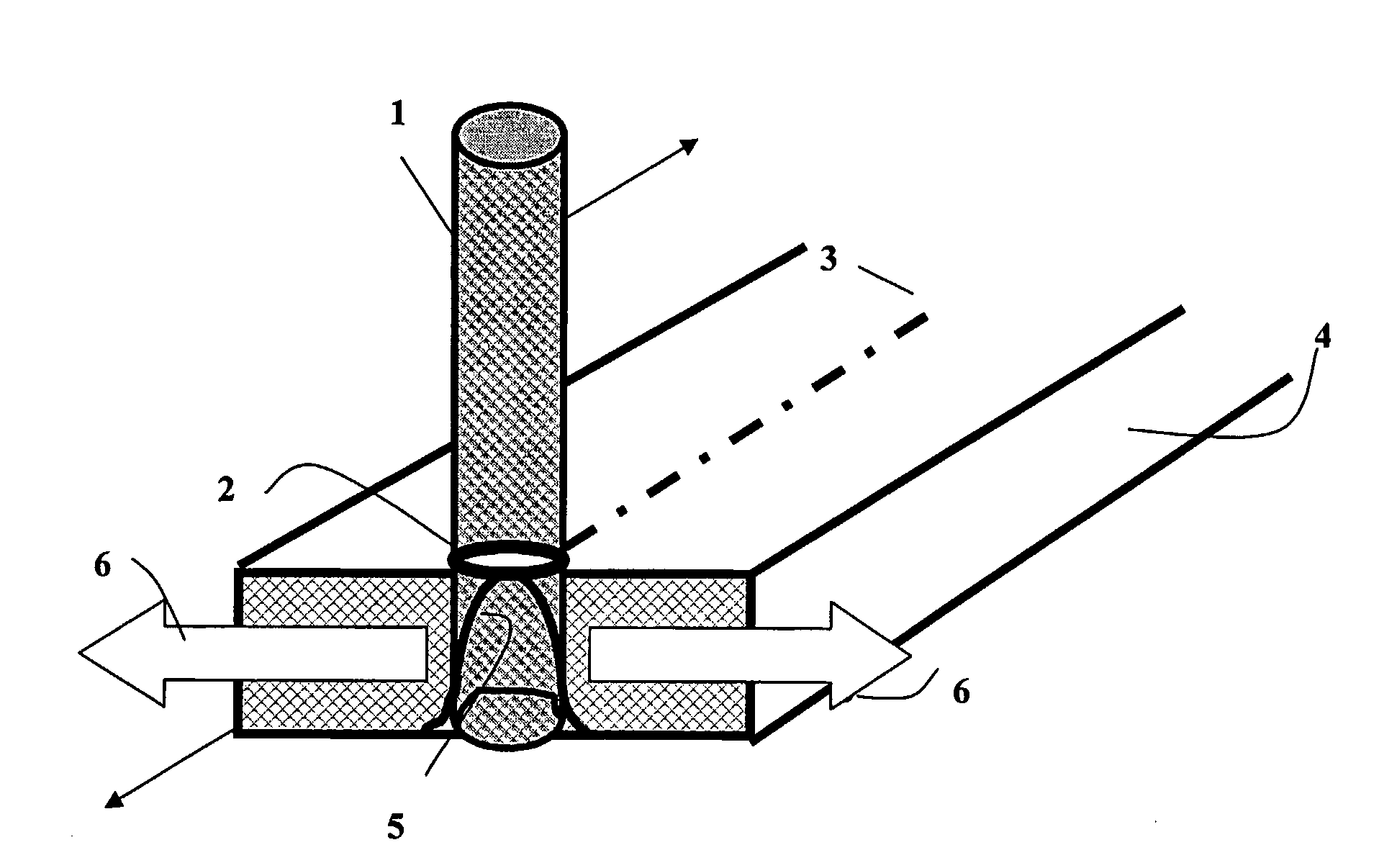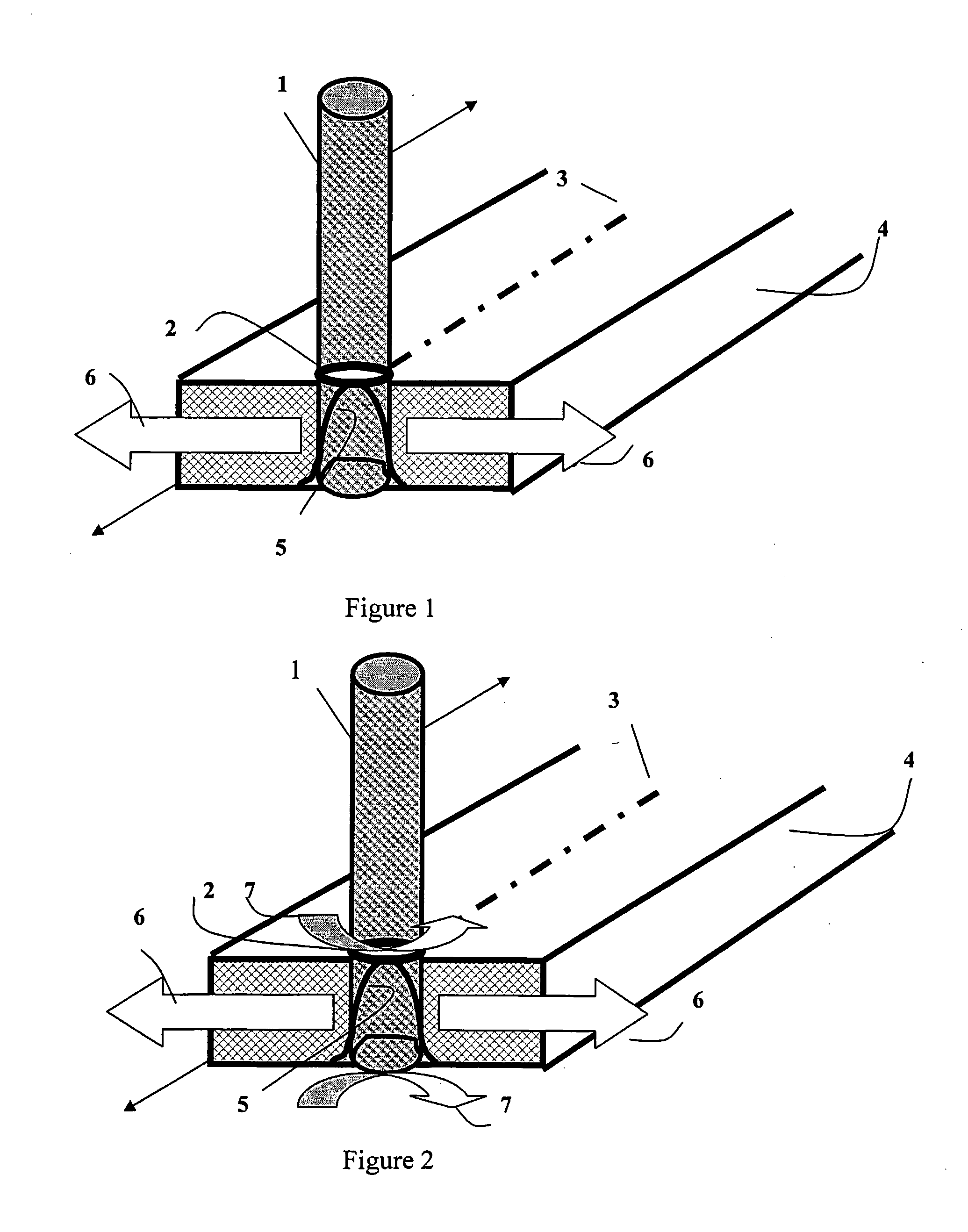Method of separating non-metallic material using microwave radiation
a non-metallic material and microwave radiation technology, applied in glass severing devices, manufacturing tools, adhesives, etc., can solve the problems of providing a using mechanical and thermal tools, etc., and achieves fast cutting speed and total separation of the substrate, high quality of cut, and easy adaptability
- Summary
- Abstract
- Description
- Claims
- Application Information
AI Technical Summary
Benefits of technology
Problems solved by technology
Method used
Image
Examples
Embodiment Construction
[0016]The present invention relates to a method of thermally separating a brittle non-metallic material, preferably a glass sheet, by a thermal shock. In the inventive method a microwave radiation with appropriate frequency and power density is used.
[0017]In all of the embodiments of the invention, the frequency (wavelength) of the concentrated microwave and power density of the applied microwave radiation are important parameters of the inventive method which must be determined for each type of body material and thickness of bodies processed. The process parameters are chosen so as to accomplish heating of selected area of a body at the required separating propagation path to required temperature in a selected time such that the difference in this temperature and the temperature of the rest of the body material is large enough to create a thermal stress that results in the separating of the body material in the heated area. In the inventive method said stress is created not only on...
PUM
| Property | Measurement | Unit |
|---|---|---|
| frequency | aaaaa | aaaaa |
| thicknesses | aaaaa | aaaaa |
| thicknesses | aaaaa | aaaaa |
Abstract
Description
Claims
Application Information
 Login to View More
Login to View More - R&D
- Intellectual Property
- Life Sciences
- Materials
- Tech Scout
- Unparalleled Data Quality
- Higher Quality Content
- 60% Fewer Hallucinations
Browse by: Latest US Patents, China's latest patents, Technical Efficacy Thesaurus, Application Domain, Technology Topic, Popular Technical Reports.
© 2025 PatSnap. All rights reserved.Legal|Privacy policy|Modern Slavery Act Transparency Statement|Sitemap|About US| Contact US: help@patsnap.com


